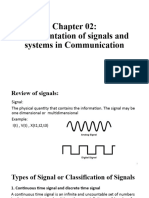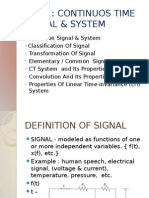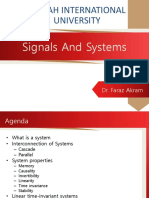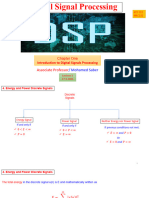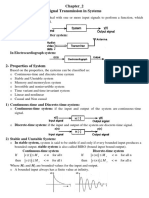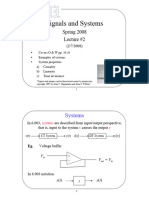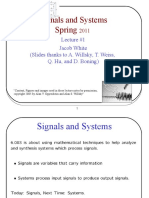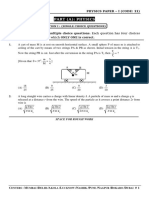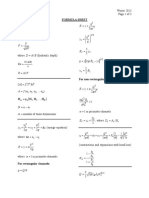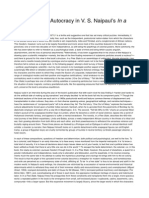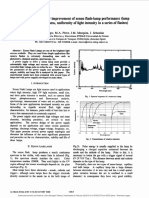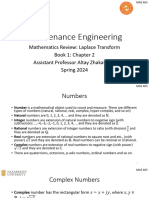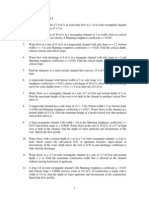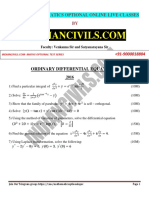0% found this document useful (0 votes)
5 views33 pagesL3 Properties of Systems (Lecture)
The document presents lecture notes for EE202, focusing on properties of signals and systems, including operations such as amplitude scaling, time translation, and time scaling. It discusses system properties like linearity, time-invariance, causality, BIBO stability, and memoryless behavior. The notes emphasize the definitions and examples of these properties in the context of continuous-time and discrete-time systems.
Uploaded by
gun2414180Copyright
© © All Rights Reserved
We take content rights seriously. If you suspect this is your content, claim it here.
Available Formats
Download as PDF, TXT or read online on Scribd
0% found this document useful (0 votes)
5 views33 pagesL3 Properties of Systems (Lecture)
The document presents lecture notes for EE202, focusing on properties of signals and systems, including operations such as amplitude scaling, time translation, and time scaling. It discusses system properties like linearity, time-invariance, causality, BIBO stability, and memoryless behavior. The notes emphasize the definitions and examples of these properties in the context of continuous-time and discrete-time systems.
Uploaded by
gun2414180Copyright
© © All Rights Reserved
We take content rights seriously. If you suspect this is your content, claim it here.
Available Formats
Download as PDF, TXT or read online on Scribd
/ 33











